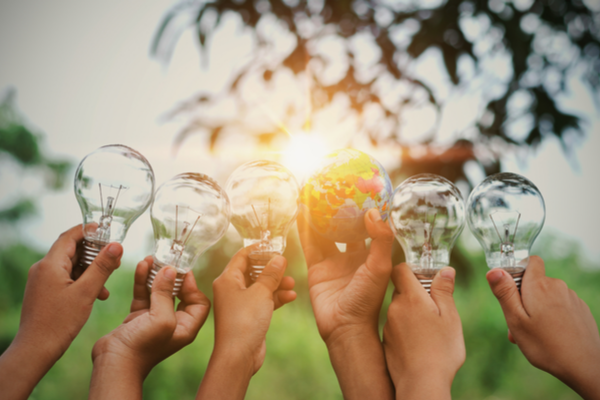10 Interesting Things You Should Know About Energy

NASA has a very important role in developing greener and more efficient sources of energy. Here you have 10 interesting facts about energy that NASA’s scientists think everybody should know.
1. Always turn off lights when you leave the room, unless you have CFLs.
To save energy, you should always turn off unneeded incandescent and halogen lights, since they’re the most inefficient bulbs. Only 10 percent of the energy they use goes toward light; the other 90 percent just generates heat. But if you have CFLs, turning them on and off too many times shortens their lifespans. Turn them off if you’ll be gone for 15 minutes of more. If you’ll be right back, you can leave them on.
2. Coal is still king, but it varies widely by state.
Across the United States, coal produces 39 percent of our electricity. It’s burned in a power plant, and the heat is used to boil water. The resulting steam moves a turbine and generates electricity. In West Virginia, over 90 percent of the electricity is generated from coal, but in California, only 1 percent of electricity is generated from this fossil fuel.
3. Daylight saving time is good for the planet.
When we turn our clocks forward each spring, we shift an hour of daylight toward the end of the day. In 2008, U.S. Department of Energy experts studied the impacts of extending Daylight Saving Time by four weeks. The extension saved 0.5 percent of electricity each day. Even though it’s a small percentage, that amounts to 1.3 billion kilowatt-hours saved, or the amount of electricity used by over 100,000 households for a whole year.
4. Every state uses hydropower for electricity.
This power source is one of the oldest on the planet. It was used by ancient Greeks to grind grain. Today, every single state, from sea to shining sea, uses hydropower. In Washington State, it generates 70 percent of the electricity. And it’s not all dams; some hydropower facilities are “dam-less” and use diversions or run-of-river facilities that channel just part of a stream through a powerhouse to generate electricity.
5. The United States is a world leader in wind.
Wind has been a source of renewable energy since the invention of the windmill thousands of years ago, but today’s wind power is generated from turbines over 300 feet tall with as many as 8,000 components. Along with China, Germany, Spain, and others, the United States is increasingly using this source of energy that breezes by us all the time.
6. The first solar powered satellite is still in orbit.
Solar energy is by far the most abundant energy resource on Earth. A whopping 173,000 terawatts of solar energy strike the Earth continuously. That’s more than 10,000 times the world’s total energy use. An early adopter of solar power, the space industry began to use this technology to provide power for spacecraft in the 1960s. Vanguard 1 was the first spacecraft to use solar cells, and it’s the oldest artificial satellite still in orbit around Earth.
7. We can get energy from trash and sewage.
All that waste we flush down the toilet and put in our trashcans doesn’t have to go to, well, waste! When waste breaks down, it can release methane, a natural gas. We can trap that gas and use it to make electricity. This is also helpful because methane is a powerful greenhouse gas. If we use it, we keep it out of the atmosphere and in doing so help the environment. Everybody wins!
8. Electric vehicles are great, depending on where you live.
Cars that run on electricity instead of gas have no tailpipe emissions, but the overall benefit to the environment depends on the sources of electricity used to charge them. If your electricity comes from low-emission sources and renewables, electrical vehicles are great. But if you charge them with electricity that comes from coal, the net emissions are on par with conventional gas powered vehicles.
9. We need better batteries.
To truly harness renewable and variable sources like solar and wind, we need to be better at storing energy. Researchers are looking at ways to more efficiently store electricity and heat for later use. Better technology will help store energy from solar panels and wind turbines, as well as power electric vehicles and devices longer, reducing energy demands.
10. The standard unit of energy is the British thermal unit, or BTU.
When we talk about energy, you’ll hear numbers in units of watt-hours, joules, and calories. The standard unit of energy, or work, is the BTU. It’s the amount of energy needed to raise the temperature of a pound of water by one degree Fahrenheit. This is equivalent to burning a four-inch kitchen match, which is also 0.3-watt hours, 1,055 joules, or 252 calories.
Source NASA
